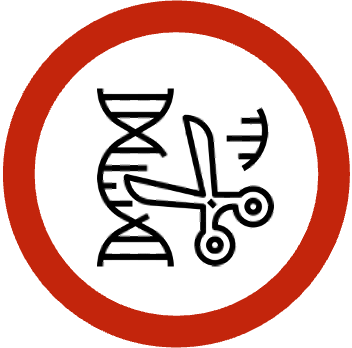Available Services
In this section, you may browse through all services available across all National Facilities. Use the filter function to filter services by National Facility, Infrastructural Unit or category of service. In addition, you may use the text search function to search across services using key words. Please note the system will search your chosen key word either in the service title or description.
Important: to activate the search remember to click on the magnifying glass icon.
Target gene Knock-Out – Available from June 2025
 Our service focuses on introducing INDELs (frame-shift mutations) to generate gene knock-out lines (KO), each targeting a single gene in either hPSCs or immortalized/cancer cell lines.
Our service focuses on introducing INDELs (frame-shift mutations) to generate gene knock-out lines (KO), each targeting a single gene in either hPSCs or immortalized/cancer cell lines.
Characterization of each engineered cell line includes:
- Cell identity confirmation using STR analysis
- Confirmation of desired editing via Sanger sequencing.
- Karyotyping (Q-banding) and identification of Copy Number Variations (CNVs) at high resolution
- Master bank post-thaw viability and mycoplasma testing.
- Optional evaluation of undifferentiated stem cell markers and pluripotency markers upon 3-germ layer differentiation assay.
We accept cell lines in a cryopreserved state, with a minimum of 1 x 10^6 cells per cryovial.
We generate up to 3 homozygous knockout (KO) clones. Heterozygous KO clones can be provided upon agreement with the applicant. If technically feasible, clones will be analyzed for the occurrence of allelic dropout.
The service typically requires 2 to 3 months for completion and includes the delivery of 1-3 clones, each provided in 10 cryopreserved vials.
Details:
Knock-In/Point Mutations – Available from June 2025
 If the cell is supplied with a donor DNA template, Cas9-induced DSBs can be repaired by integrating DNA sequences of various lengths using homology directed repair (HDR) mechanism. We provide Knock-In (KI) services to obtain reporter cell lines (including safe harbor integrations), edited cells harboring specific single nucleotide corrections as well as labelled proteins (e.g., with fluorescence or a protein tag).
If the cell is supplied with a donor DNA template, Cas9-induced DSBs can be repaired by integrating DNA sequences of various lengths using homology directed repair (HDR) mechanism. We provide Knock-In (KI) services to obtain reporter cell lines (including safe harbor integrations), edited cells harboring specific single nucleotide corrections as well as labelled proteins (e.g., with fluorescence or a protein tag).
Characterization of each engineered cell line includes:
- Cell identity confirmation using STR analysis
- Confirmation of desired editing via Sanger sequencing.
- Karyotyping (Q-banding) and identification of Copy Number Variations (CNVs) at high resolution
- Master bank post-thaw viability and mycoplasma testing.
- Optional evaluation of undifferentiated stem cell markers and pluripotency markers upon 3-germ layer differentiation assay.
We accept cell lines in a cryopreserved state, with a minimum of 1 x 10^6 cells per cryovial.
The service typically requires 2 to 4 months for completion and includes the delivery of 1-3 clones, each provided in 10 cryopreserved vials.
Details:
Custom Gene Editing – Available from June 2025
 Development and execution of custom gene editing projects.
Development and execution of custom gene editing projects.
This service is designed to offer expertise and technical support for the implementation of genome engineering projects that demand customized approaches not presently covered by off-the-shelf knock-out and knock-in editing services.
The proposal should provide a thorough explanation of the rational, goals, and expected outcomes to facilitate a comprehensive evaluation.
Tailored gene editing projects involve completing sequential checkpoints before moving on to the implementation of the proposed experiment (Phase 3). Throughout these phases, significant interaction with the applicant is expected.
- Phase 1 (Strategy design): A tailored strategy will be designed following preliminary meetings and discussed with the applicant before proceeding to the next phase.
- Phase 2 (Strategy validation): The designed approach will undergo testing in the relevant cell line to assess its effectiveness (efficiency, locus accessibility, …).
- Phase 3 (Target editing generation): Upon successful completion of Phase 2, the validated approach will be applied to generate the desired cell line.